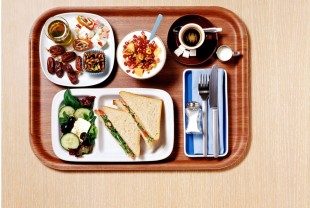Faculty members can join students for occasional meals in the residential colleges, thanks to a new program launched last fall by the Office of the Dean of Undergraduates.
The program is provided exclusively to facilitate conversation between faculty and students. Every faculty member can go with one or more students to their college servery for lunch or dinner. The Office of the Dean of Undergraduates covers the cost of the meal for the faculty member.
 “We think there is great value for a faculty member to have a lunch or dinner with students from time to time, without necessarily being a faculty associate of one of the colleges,” Hutchinson said. “And we want to make it easy for this to happen.”
“We think there is great value for a faculty member to have a lunch or dinner with students from time to time, without necessarily being a faculty associate of one of the colleges,” Hutchinson said. “And we want to make it easy for this to happen.”
The program operates with the following guidelines:
- The offer is limited to occasional meals. As a general rule, this means on average about one meal a month.
- If faculty members wish to meet with students more often, they should consider becoming a faculty associate. Detailed information about the associates program is available at http://associatesprogram.rice.edu/.
- Faculty who decide to join a student for lunch should accompany that student to their college commons (dining hall) or meet them there. Access to each commons requires the swipe of an ID; faculty who are associates have activated ID cards. Once inside the commons, faculty should proceed to the cashier at the entrance to the servery (Rice’s term for the college’s food court), and identify themselves as a “dean’s guest.” Faculty will be asked to sign in.
Faculty members who are unfamiliar with college dining services should know that there is a commons associated with each college and that there are six serveries: North (for Brown, Jones and Martel colleges), West (for Duncan and McMurtry colleges), South (for Hanszen and Wiess colleges), Siebel (for Lovett and Will Rice colleges), Sid Richardson and Baker.
For more information about the program, contact Hutchinson at ugdean@rice.edu.


Interesting program from Rice University, this might work to spark conversations amongst the faculty and students if utilized well by students. I hope other educational institutions would come up with similar ideas for increasing student/teacher interaction for some brainstorming and critical thinking even outside the classroom.